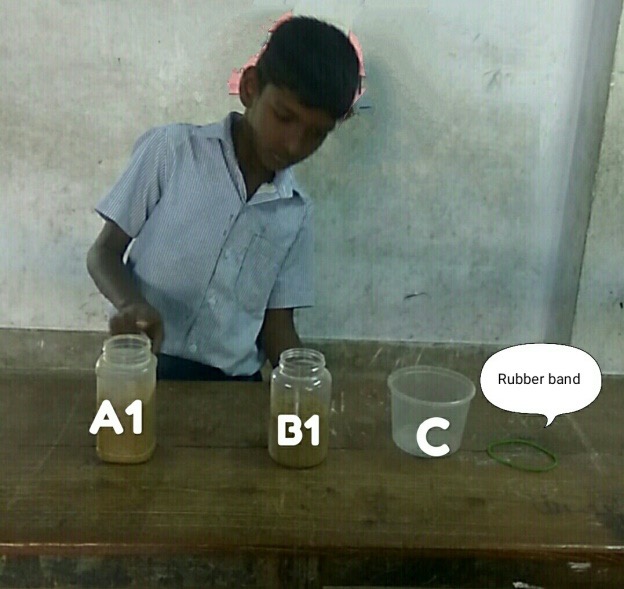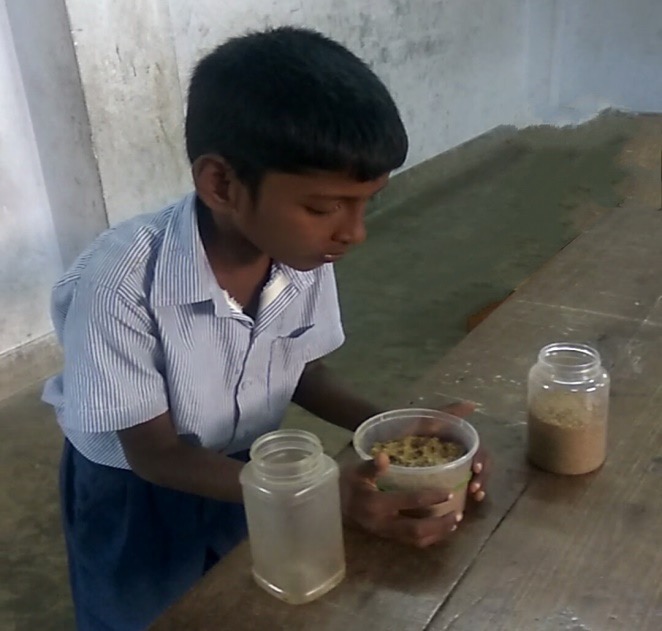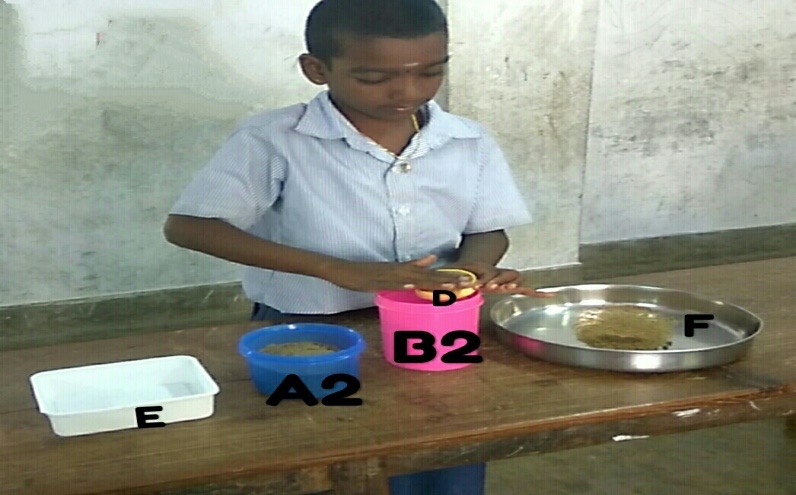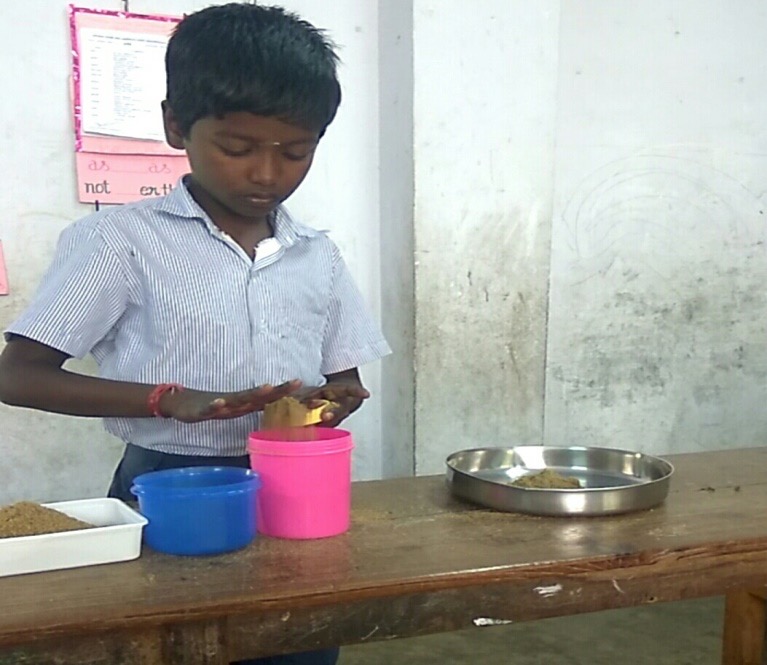The article details the process of the study conducted to understand the misconception that students have about measurement of volume.
GAPS IN CONCEPTUAL UNDERSTANDING:
- The students believe that larger/taller containers have higher quantity or higher volume.
- During unit iteration, they are not yet able to think of a unit as the part of a whole quantity.
STUDY:
A sample of nine students from Grades 3 to 5 of my school were interviewed individually. The interview consisted of two tasks—a transitivity task and a unit-iteration task. These tasks, which are presented in this article, were developed to assess the understanding of the students pertaining to transitive reasoning and unit iteration. The Early Numeracy Interview (Department of Education, Employment and Training, 2001) is acknowledged as an excellent tool for assessing the mathematical understanding of students.
TRANSITIVITY TASK:
Transitivity is a concept that is based on comparison. Understanding this idea can be challenging for young children, and it is a skill that develops over time. According to the research scholar Piaget (Piaget, Inhelder, & Szeminska, 1948/1960), measurement becomes unnecessary to compare the length of two pencils that one is holding, since they can be compared directly. It is indirect comparisons that require the ability to make mental relationships.

In this task, three containers were used, and a rubber band was used as a marker. Container A1 was cylindrical in shape and was transparent. It was partially filled with sand. Container B1 was in the shape of a cuboid-like structure. It was transparent as well and was partially filled with sand. The third container C was used to empty the contents of each of the containers, one at a time—either A1 or B1.
Each student was shown the containers A1 and B1 and was asked the question: “Is there the same amount of sand in A1 as there is in B1, or is there more in A1 or more in B1?” When the students gave an answer, they were further asked: “How do you know?”
Accepting whatever answer the student gave, I asked the student to prove their statement with the help of the container C1 and the rubber band. Depending on the student’s response, other questions were posed to encourage him or her to explain how they could prove their answer.
The students were categorized into three levels as shown below. Level 3 was the highest while Level 1 was the lowest.
Level 3 Children prove their answer in their first attempt without any probing questions.
Level 2 Children prove their answer in their later attempts with probing questions.
Level 1 Children could not think of any way to prove their answers even after many probing questions were asked.
IMPORTANT THINGS THAT WERE OBSERVED:
- Does the student provide a reasonable estimate about which container has more quantity of sand?
- Does the student use the marker (rubber band) accurately to compare the capacity of the containers?
SOME SNIPPETS OF THE CONVERSATIONS ENGAGED IN DURING THE TASK:

T: Look at the containers A1 and B1. Which of these has more quantity of sand?
S1: Container A1.
T: How do you know?
S1: Because container A1 is taller.
T: Now you have to prove your statement, i.e. container A1 has more quantity of sand than container B1.
S1: I can empty the container A1 into the container C. Then, I will fill the sand of the container B1 into the container A1.
T: Alright. Good. How will you know the sand in the container B1 is lesser than one in the container A1.
S1: I have to mark the level of the sand.
T: Yes, you have to mark it. How will you do it?
S1: With the help of the rubber band.
T: Now tell me which container has more sand?
S1: Container B1 has more sand than container A1.
T: So, is your assumption correct?
S1: No, miss.
T: Why?
S1: Don’t know, miss.
T: Are the shapes and sizes of the two containers the same?
S1: No, miss.
T: Before judging, we should not only consider the length of the container but the shape and size of the container as well.
UNIT-ITERATION TASK:
Iteration involves using a unit repeatedly in order to measure something. This concept is an important one for the students to understand measurement with either standard or non-standard units.
Opaque containers were used for the unit-iteration task. Containers A2 and B2 were different in colour, size, and shape, and they were partially filled with sand. Container D, a lid, was used as a unit. Container E and F used to dump the sand for the unit iteration.

Showing the opaque containers A2 and B2 to the students, I asked, “Here are two other containers. Do you think there is as much sand in A2 as there is in B2? Or does A2 have more sand than B2 or does B2 have more sand than A2?” Any answer that the student gave was accepted, following which they were asked: “How do you know?”
The student was offered one small lid, container D, and asked: “Can you use this lid to prove your statement?”
The children were categorized in the same manner as in the transitivity task.
IMPORTANT THINGS THAT WERE OBSERVED:
- Does the student use identical units to measure the sand in the containers?
- Does the student provide the correct unit of measurement in their response?
SOME SNIPPETS OF THE CONVERSATIONS ENGAGED IN DURING THE ITERATION TASK:

T: Look at the container A2 and B2. Which of this contains more sand? Or do they contain equal amounts?
S2: Both are equal.
T: Now you have to prove your statement, i.e., both are equal.
S2: Alright, miss.
T: How will you prove it?
S2: I can make use of this lid, D.
T: How many units are there in container A2?
S2: 12.5 lids.
T: How many units are there in container B2?
S2: 11 lids.
T: Is your assumption correct?
S1: No, miss.
T: Why?
S1: Don’t know, miss.
T: Are the shapes and sizes of the two containers the same?
S1: No, miss.
T: Before judging, we should not only consider the length of the container, but the shape and size of the container as well.
T: Are you filling your measuring cup equally each and every time? (By showing the video)
S2: No, miss.
T: Repeat this task. Make sure that you are filling your measuring cup equally each and every time.
S2: (Repeating the task)
T: How many units are there in container A2?
S2: 11.5 lids.
T: How many units are there in container B2?
S2: 11.5 lids.
T: One lid should be considered as one smaller unit. Now, tell me the measurements in units.
S2: 11.5 units.
T: Good.
FINDINGS:
The findings of the interview conducted with a sample size of 9 students of each grade were tabulated. It can be seen in Table 1 that the overall percentage of students who clearly demonstrated transitive reasoning increased with the increase in the grade level. The percentage of students who clearly demonstrated unit iteration also increased with the increase in the grade level (See Table 2).

TABLE 1 - TRANSITIVITY TASK
TABLE 2 - UNIT-ITERATION
CONCLUSION:
- During the interview, most of the students’ answers to the question “How do you know?” was “This container is taller. So, this container will have more sand”. This belief was corrected during the interview, and it was shown that the width of the container must be taken into consideration as well.
- After the unit-iteration task, the students were able to think of a unit in terms of being a part of a whole.
- Learning by doing clarifies concepts in the minds of young students.
- It is important that we explicitly teach these concepts to the students and not leave the acquisition of those concepts to chance.
REFERENCES:
- Charlotte Strange Reece, Jacksonville State University and Constance Kamii, (2010) “The Measurement of Volume: Why do young children measure inaccurately?” University of Alabama, Birmingham.
- “The Principles and Standards for School Mathematics” (2010). by National Council of Teachers of Mathematics , Delhi
Teacher: S. KESAVARDHINYE, PST, MGGMS-Nellithope.
Term: Term 3
- Log in or register to post comments